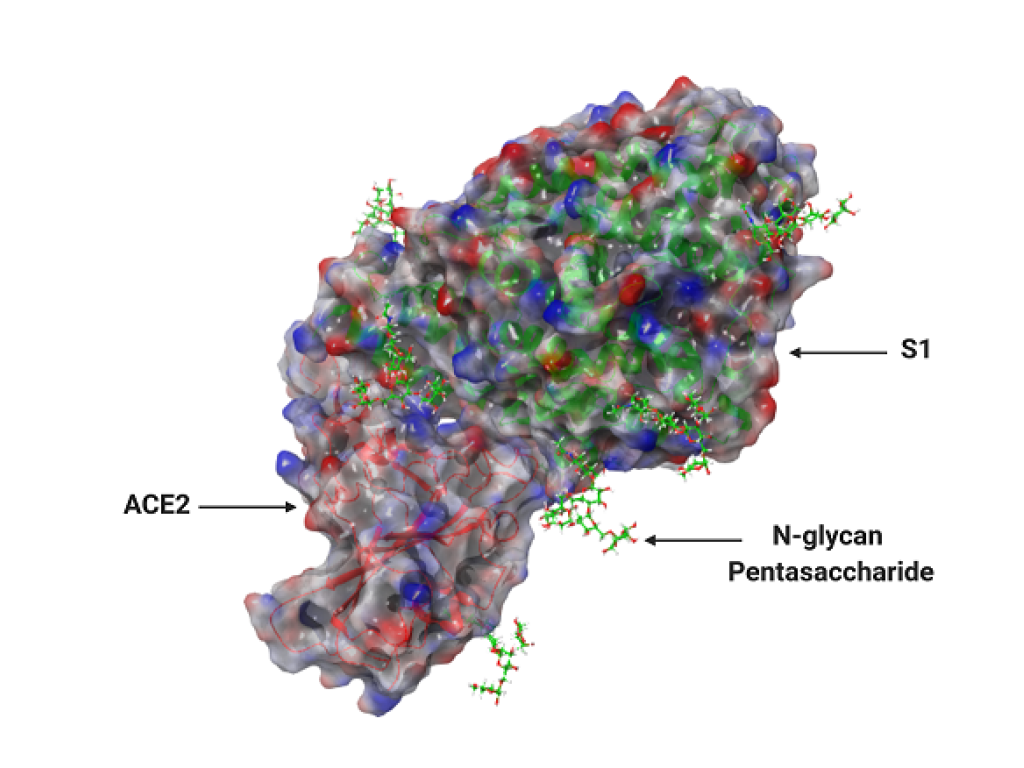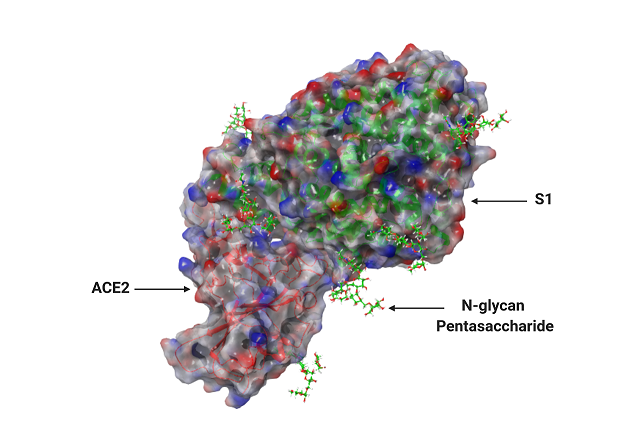Understanding Glycans in COVID-19 Drug Design


SCRU lab generated image. The spike protein is shown with the green color secondary structure and the ACE2 receptor is shown in red color secondary structure.
SARS-CoV-2, more commonly known as COVID-19 or simply the coronavirus, has consumed the medical and scientific research community for the majority of 2020. In particular, the foci have been a search for a vaccine to prevent illness and therapeutics to treat the critically ill. A recent article in GEN makes the point that the secret to a vaccine for COVID-19 or therapeutic may lie with glycans.
COVID-19 operates by infiltrating human cells using protein spikes on the virus’ surface with the aim of using the host's cellular machinery to replicate the virus and overwhelm the host. The spikes are covered in sugars which allow access and entry to human cells, without the host’s immune system recognising the presence of the pathogen. These carbohydrate shields are how most pathogens and altered tumour cells invade human systems, causing cancer and microbial infections. At SCRU researchers in the Visualization and Informatics Laboratory develop machine learning methods to isolate glycan and glycoenzyme patterns that a disease signatures. Researchers in the Computing and Modelling Laboratory take these signatures as leads to simulate the complex antibody binding interactions and glycoenzyme reactions and design new drugs. These designs are synthesized and tested in the glycoenzyme laboratories using specialised glyco and inhibition assays. While the focus has been cancer and antimicrobial diseases such as influenza the laboratory may be contemplating honing its specialised tools on Covid-19. Although this is not the laboratory's focus, it may be needed given SCRU’s glycoscience expertise, advanced computational tool set and in-house experimental testing facilities.
Vaccines are often multi-year projects, and, as such, a drug based on glycan scaffolds will most likely be discovered before a vaccine is made for the virus. So, while GEN’s coverage focuses on vaccine development, it may be that therapeutics research will provide the solution to the pandemic.
Original article found at https://www.genengnews.com/insights/understanding-glycans-in-covid-19-drug-design/
